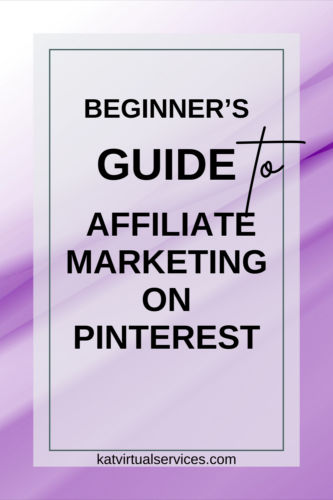As an affiliate marketer, you’re always looking for the next big monetization platform. While Instagram and TikTok often steal the spotlight, Pinterest is a hidden gem that can generate significant income. Why? Pinterest users aren’t just aimlessly scrolling – they’re actively seeking ideas and solutions and are usually ready to spend. You lead them to your affiliate products as an affiliate. You can earn substantial commissions with the right strategy, potentially turning Pinterest into a lucrative income stream.
What Kind of Products to Promote
The secret to thriving with affiliate marketing on Pinterest (or any platform) is promoting products that genuinely resonate with your audience. It’s crucial to consider your target audience and the purpose of your content.
When creating content for affiliate marketing, this means structuring it appropriately for your audience and ensuring that it flows logically and clearly. If you’re frequently asked about a specific topic, there could be a monetization opportunity. For example, if people often ask about your websites, share the best apps, tools, services, and programs.
Creating Content for Your Affiliates
Think of your content as your product. Successful affiliates don’t just create content for the potential earnings; they create content that genuinely solves problems for their audience. You can spark your audience’s curiosity and offer valuable solutions by sharing your stories and unique perspectives. So, when you endorse a product, explain why you love it and how it can benefit your audience. And always maintain transparency by disclosing your affiliate relationship.
Affiliate Marketing on Pinterest without a Website
You can use affiliate links on Pinterest without a blog or website. Pinterest created this feature to support creators who may not have the time, patience, or resources to maintain a website. You just need an affiliate link, not a blog. This is a simple way to start monetizing your content, and as a search engine, Pinterest can circulate your optimized Pins for years to come. Note: Be sure not to post the same URL, especially with the same image, more than once daily. And don’t use URL shorteners. More on this later.
It’s a good idea to have a website with a blog as a best practice. This allows you to create more detailed content and make money from it through affiliate links. Having long-form content on your website can also help you attract SEO traffic and give you complete control over your content. There’s no specific size requirement to apply to affiliate programs, although the requirements vary by program. Most programs will inquire about your promotional plans.

Affiliate Marketing on Pinterest is not Enough
Merely posting on Pinterest isn’t always sufficient. Whether you’re a business or a blogger, simply posting on Pinterest won’t always yield the desired results. Expand your reach beyond just one platform to reach a wider audience and make an impact. Share your pins on other social media channels like Facebook, WhatsApp stories, Instagram, and even your blog.
By making extra effort to make your content accessible, you’ll see faster and more noticeable results from your pins. Don’t limit yourself to just one platform. Spread your content to reach a larger audience and leave a lasting impact. Collaborating with other affiliates or influencers can also help expose your brand to a wider audience and attract potential customers.
A few Affiliate Marketing Programs
Explore industry affiliate programs, from online courses to beauty products and marketing services. While this isn’t an exhaustive list, it’s a starting point for your affiliate journey. Programs marked with an asterisk (*) are my affiliate links. If you click on one and make a purchase, I may earn a commission – but this never impacts the price you pay or my recommendations.
- Shareasale* (many merchants to choose from)
- Amazon Associates
- Rakuten Advertising (many merchants)
- PartnerStack (B2B technology)
- FlexOffers* (several merchants to choose from)
What Not to Do When Affiliate Marketing on Pinterest
Link cloaking involves disguising an affiliate link URL to shorten and hide the affiliate ID, making it less visible to users. This practice is prohibited on Pinterest as it can obscure the affiliate’s commission and is considered against the platform’s advertising guidelines. Adhering to Pinterest’s rules is essential to ensure a successful affiliate marketing experience on the platform and avoid potential issues.
You must disclose when using an affiliate link to comply with the Federal Trade Commission and Pinterest’s rules. There are several easy ways to do this on Pinterest. Add a simple hashtag like “#affiliatelink” or “#sponsored” to your pins. You can also label your content as “sponsored” or “affiliated” directly. Proper disclosure helps you avoid account suspension or bans. Protect your account by adding disclaimers to your pins and landing pages.
How Often to Post Affiliate Links on Pinterest
There’s no rule on how many affiliate pins you can create for a single content or link. However, the key to a successful pin is a high-quality graphic that stands out. A high-quality pin has a clear font and the right keywords, engaging descriptions, and is visually appealing. By focusing on creating eye-catching visuals and compelling descriptions, you can drive more clicks to your affiliate links. Remember, don’t post the same pin image more than once. And it’s best to diversify links and not use the same link repetitively.
Pinterest is a goldmine for affiliate marketers, but you must approach it strategically. You can earn substantial income from the platform by promoting relevant products, creating valuable content, and following best practices. Don’t be afraid to experiment and try new things – with the right approach, Pinterest can become one of your top income streams. So, what are you waiting for? Start creating your Pinterest affiliate marketing strategy today and watch the commissions roll in.

